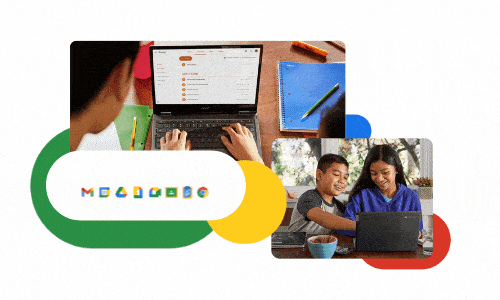The computing in education has become almost a requirement in many schools and has greatly improved the Teaching and learning processes. New technologies have grown very quickly and are used in all educational stages, That is why it is important to be aware of the new updates and tools provided by large technology companies, such as Google, Microsoft, Zoom, etc.
In this sense a challenge presented by computing is that the student actively participates in classes, exercises, exams, reducing the dropout rate and increasing the desire to study again. EITHER think and learn creatively, with a not so traditional method.
In the next post we will talk about the computing in education, how it is used in classrooms, the advantages for students, and the future regarding these topics.
1. How has computer technology changed the way students learn?
Now, thanks to new technologies we have a more flexible educational process, since we can attend classes from anywhere, with different devices, and also communicate and collaborate in real time. In many educational centers,The way of teaching has changed, providing more meaningful learning and a more inclusive education.
In this sense, with the Technological tools that exist today to educate and learn, the user can adapt them to their own pace of learning, since the digital environment and access to other study materials favor self-learning.
Companies like Google offer tools, devices and cloud technology suitable for the entire public and designed to make classes more flexible, agile and safe. Within Google for Education can be found Google Worksapce for Education (with applications such as Classroom, Meet or Drive), computers Chromebook, or interactive whiteboards, and other devices such as Chrome tablets.
We understand that educational technology is about use of technological devices for educational purposes. Currently, teaching staff have the possibility of acquiring internet, computers, digital whiteboards, among many options to share their knowledge and organize classes in the best possible way.
2. How can computer tools be used to improve learning?
The computing in education and technological tools offer many possibilities to improve student learning at various educational levels. Some of the ways and advantages of using these tools to improve learning are:
![]() Improvement in teaching: using simple learning tools to improve collaboration and communication between users. This way, students can work together on online projects, share ideas, and receive feedback from other students and teachers through emails and online chats.
Improvement in teaching: using simple learning tools to improve collaboration and communication between users. This way, students can work together on online projects, share ideas, and receive feedback from other students and teachers through emails and online chats.
![]() Productivity increase: when creating, organize, share, and assign grades from one place to make the most of your time.
Productivity increase: when creating, organize, share, and assign grades from one place to make the most of your time.
![]() Optimization of student work: These programs and apps can be tailored to the individual needs of students so they can learn more effectively. In addition, they can interact with the learning materials in different ways, achieving greater motivation.
Optimization of student work: These programs and apps can be tailored to the individual needs of students so they can learn more effectively. In addition, they can interact with the learning materials in different ways, achieving greater motivation.
![]() Protection of your center's data: Most tools are designed to protect the work, identity and privacy of the entire educational community, with proactive security functions and controls.
Protection of your center's data: Most tools are designed to protect the work, identity and privacy of the entire educational community, with proactive security functions and controls.
3. What obstacles must be overcome for students to have access to computer technology in the classroom?
Currently, one of the most difficult challenges facing the education sector in technology it has to do with digital divide that exists in education. TOSome students and communities do not have access to computer technology at home and may not have the skills necessary to take advantage of it in the classroom. In order to access these technologies, you need electronic devices and internet connection constantly, resources that not all people can access.
On the other hand, another aspect to take into account has to do with the training and training what teachers and students need to include these tools. Although they are easy to use, in many cases educational staff may not be trained in the use of this type of computer technology. If they are not trained, in many cases they may feel unsafe using them in the classroom or may not know how to incorporate them into your study plan.
In summary, when we talk about educational computing, we must take into account these points, which may include the lack of financing, inadequate infrastructure, the digital divide, the insufficient training and training, and the security and privacy.
Digital transformation is much more than buying devices. The incorporation of new technologies in our lives, it must also go hand in hand with a update in the educational model and in the methodologies, which must be supported by a profound change in the educational system.
4. Educational computing challenge
First we must understand that computing is a very important tool where the processes Teaching processes are affected not only by technological issues, but also by problems with adaptation of these new resources to our teaching habits. Taking into account that this new way of studying is key and necessary in schools, it must be used as a work tool and as an intellectual instrument for the enhancing students' skills in relation to creative problem solving.
This is why, although educational computing offers many opportunities for improve the teaching-learning process, also faces challenges that must be addressed effectively. These challenges include effective integration into the Curriculum, the need for training and qualification, the resource availability, management and maintenance, and the security and privacy. By addressing these challenges, educational computing can maximize its potential and improve education for all students and teachers.
5. What aspects of education can be improved with the help of computer technology?
The computing in education It facilitates the teaching and learning process in several ways, including greater and easier access to information, setting the pace of learning, the possibility of encouraging collaboration and communication among colleagues, providing accurate assessments, and offering opportunities for learning. remote and real-time learning.
Therefore, we highlight these benefits of computer technology in education:
Computing helps to make learning more interactive and participatory, favoring collaborative work in the classrooms.
The possibility of learning at a distance and in different contexts opens. Allows greater schedule flexibility.
It allows students to maintain a rhythm that is more personalized to their needs.
It is much easier for people who have reduced mobility or special needs.
6. Advantages of educational computing in the classroom
As we have seen previously, the educational computingIn the classroom you can improve and personalize the Teaching and learning processes, encourage autonomous learning or that the student actively participate, save time, provide access to educational resources and encourage collaboration, communication and teamwork.
Facilitates understanding
The use of these tools motivates and makes students pay more attention in an easy way. Thus, the contents are learned more quickly. In this sense, one of the advantages of education is that it helps improve the integration of people with disabilities.
Promotes digital and audiovisual literacy
Students must be prepared for the digital and audiovisual skills necessary for their professional future.
Increases student autonomy
Another advantage of education is that it helps people become more self-sufficient and decisive. Since it offers the possibility of thinking and learning creatively, resulting in learning being more significant.
Teaches how to work and collaborate as a team
Technology generates interaction between students and promotes teamwork. In this sense, gamification is a magnificent educational tool.
Helps develop greater critical thinking
The Internet and social networks open up a large number of points of view to students. In this way, they can teach how to debate and accept other people's opinions.
Make teaching more flexible
Education has the advantage that students can follow different rhythms in their learning. This is possible thanks to access to additional content or support materials.




